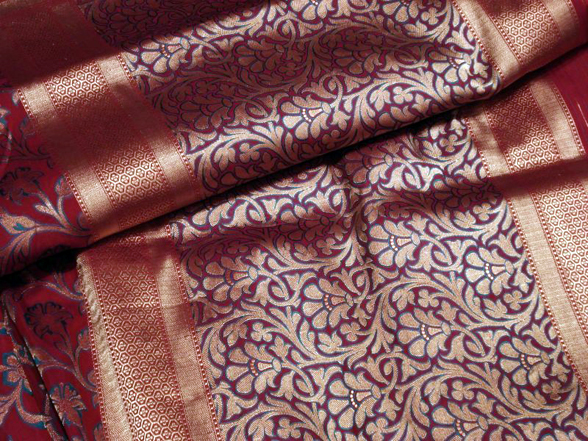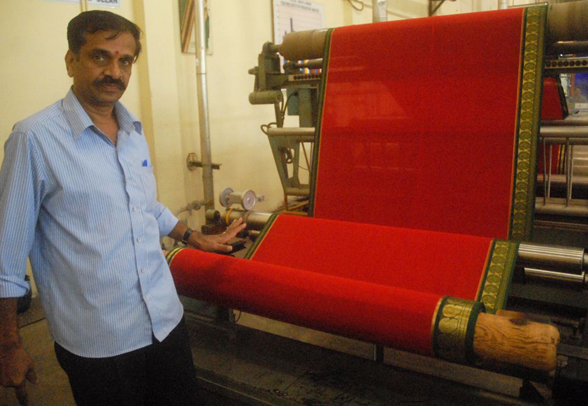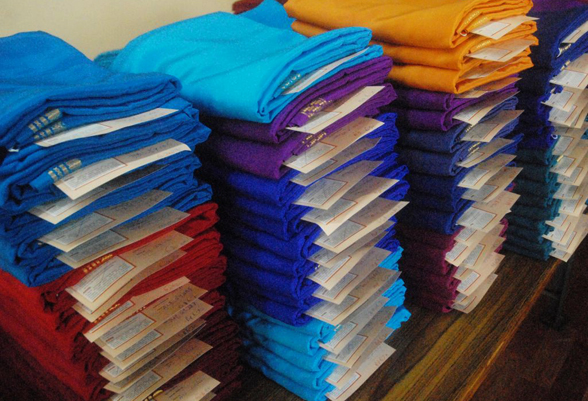
India is renowned for many things exceptional and unique. ‘Saree’ (sari), the sensual traditional costume, is indeed an integral part of this uniqueness. While we can quite proudly say it is the best attire to accentuate a woman’s feminism, the apparel boasts of a history dating back to the 3,000 year old Indus Valley Civilization. Ever since, this lovely costume has been worn by Indian women in diverse styles and sensuous ways, further building on the magical yard’s popularity.
A silk saree takes the pride of place in an Indian woman’s wardrobe due to its luxurious lustre and exquisite design. Among the myriad styles of silk sarees, ‘Mysore Silk’ from Karnataka stands out for its unique weave, smooth texture and minimalist design. Manufactured exclusively by the Karnataka Silk Industries Corporation (KSIC), these lovely saris are produced at the country’s oldest silk manufacturing unit – the Mysore Silk Weaving Factory at Mysore, Karnataka. Apart from inheriting the legacy of the silk manufacturing from the erstwhile Royal Government of Mysore, the KSIC also enjoys the privilege of being the sole proprietor of the geographical indication for ‘Mysore Silk’ with the certificate of GI patent registration awarded in 2005.
Established exactly a century ago in 1912, by the then Maharaja of Mysore, the Mysore Silk Weaving Factory is the only unit authorised to manufacture this multi-hued fabric out of pure silk and gold zari. Legend has it that the then Maharaja Krishna Raja Wadiyar IV went to Britain for Queen Victoria’s jubilee celebrations was impressed by the machine made silk fabric used by the British royalty. This inspired him to order for 32 power-looms to be imported from Switzerland to begin the earliest known production of machine made silk saree in India. Today, the Mysore Silk Factory produces about 35,000 metres of the pure silk fabric per month and nearly 4,25,000 meters per year, which are turned into numerous beautiful sarees, dress materials, dhotis and more.
Although the exact history of the Mysore Silk saree can be traced back to 1912 AD, its origins can be traced back to 1785 AD, when the first silk cocoons were imported to Mysore. Tipu Sultan – the de-facto ruler of the then Kingdom of Mysore imported silk cocoons from China, with a vision of making Mysore, a leading nation in quality silk production. Only a little less wondrous in comparison the China silk yarn, Mysore silk yarn still stands out in comparison to various other forms of silk fabrics. After the Sultan introduced sericulture in the Kingdom of Mysore, several hybrid silk worm varieties were created which were adapted to Indian climatic conditions. Ever since, sericulture in Karnataka has flourished with the districts of Mysore, Mandya, Chamarajnagar and Bangalore taking the lion share of silk production in the country.
Today, impressed by the luxuriant fabric and to keep the charm of the graceful Mysore Silk, scion of the Royal family of Mysore, Srikanta Datta Narasimharaja Wodiyar has taken up the promotion of this elegant fabric under the brand name – Royal Silk of Mysore. The scion himself is the acknowledged designer of this royal brand. These royal masterpieces, can be purchased in the showroom inside the Mysore Palace complex where the rich collections are showcased.
What Makes Mysore Silk so ‘extra ordinary’?
The Mysore Silk sarees are luxuriant, uniquely minimalistic, elegant and continue to stand out with all these qualities though machine made! The sarees have plain single colour base fabric of 100% pure silk blended with a narrow strip of gold zari border at both ends. Each saree of 5.5 metres ends with a large ‘pallu’ with exquisite design and a blouse piece material. The sarees manufactured come in varieties to suit the customer tastes viz: Crepe-de-chine, Georgette, Zari printed crepe silk sarees, semi crepe sarees. The sarees come in nearly 300 different colours, which are either printed or dyed and in 115 vivid design combinations. The main body or the base fabric is surprisingly plain which really stands out amid all the flowery elaborate designs found on other Indian sarees.
Such is its quality that when rightly preserved, Mysore Silk sarees can be maintained to appear like the brand new ones even after decades. Thus, it has grown out to be a unique brand in itself, attracting connoisseurs from not just across the nation bout from all through the globe. Travelers visiting Mysore from abroad as well as other parts of India make sure to pay a visit to the factory that manufactures Mysore Silk. It is worthwhile to pay a visit to the Mysore Silk Factory, if you wish to witness the beauty of this magical fabric being made with all its wonderful aspects!
Centenary celebrations
This year happens to be the most special year in the history of Mysore Silk – For, starting from 1912 to 2012, it has ruled the world of silk fabrics, completing an entire century successfully!
KSIC has introduced ‘fusion label’, a nano-technology hot press which makes counterfeiting impossible. This initiative is on the lines taken by Silk Mark Organisation of India of the Union ministry of textiles, which has also taken a decision to introduce the fusion labels.
Also Read: Mulberry Magic from Mysore
Factfile –
http://articles.timesofindia.indiatimes.com
http://articles.timesofindia.indiatimes.com









Amazingly written story, draping a mysore silk saree pronounces your love for timeless fashion and to make an impactful statement on the onlookers. Proud of our art and heritage, hats off to the artisians who put a lot of effort to make such amazing sarees.